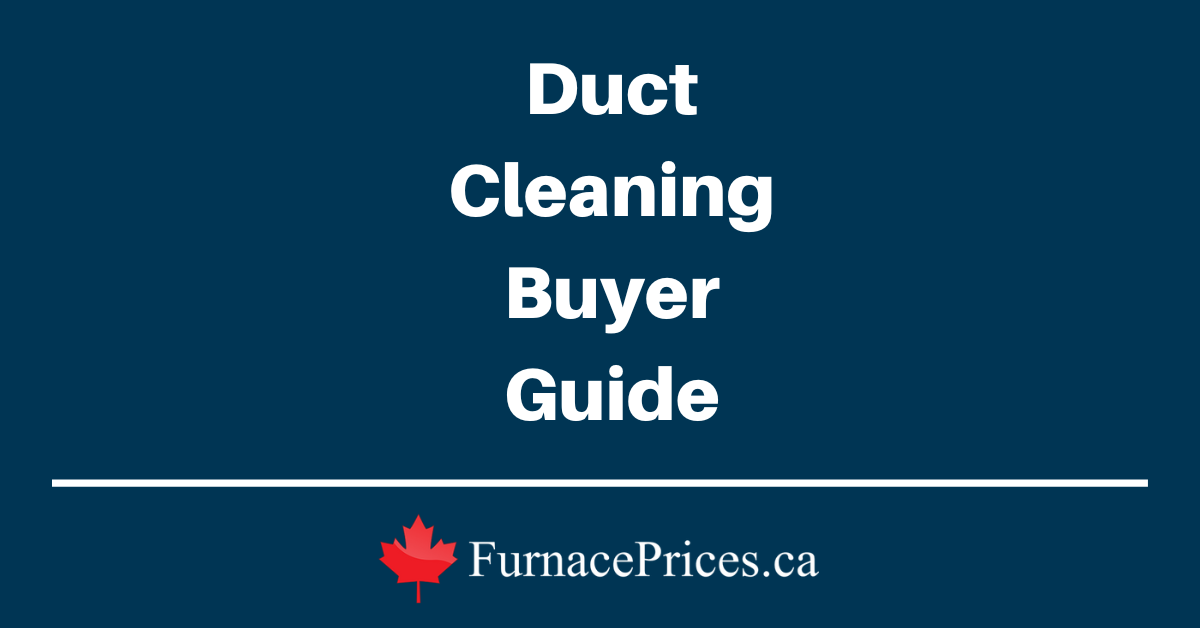Table of contents
Almost all furnaces or air conditioners available on the market today come with very good warranties. If you follow the manufacturers’ terms, it is easy to maintain the warranty and be covered in case of malfunctions or breakdowns.
Unfortunately, many customers don’t read the warranty terms and conditions thoroughly. They don’t even realize they have voided the warranty until they need some repairs and find they have to pay out of their pocket.
This article explores the different ways in which you can void your furnace or central air conditioner warranty and find yourself paying for repairs yourself.
Why are Furnace or AC Warranties Important?
New AC unit prices and warranties are some of the most important factors to consider while buying furnaces or central air conditioning units. If the warranty isn’t valid, you might be forced to pay for all basic repairs and replacements out of your pocket, which can burn a hole in your pocket.
Here are some reasons why you need a good warranty:
- Most furnaces come with warranties for the heat exchanger and the main components. The heat exchanger is one of the most expensive parts of a furnace and costs a small fortune to replace. Having warranty coverage for this component is essential.
- The heat exchanger warranty is typically for around 20 years, though some brands offer more. That covers the lifespan of the furnace, in most cases. Some manufacturers provide a limited lifetime warranty.
- The main components warranty will usually cover functional parts like blower motors, igniters, and electronic controls. You should check with the manufacturer to see how far this warranty extends.
- Bear in mind that these are limited warranties and will not cover the labour cost involved in repairs. Some installation companies provide additional warranties on installation and maintenance at a fair cost. That can help you save money on future repairs.
Mistakes That Void the Warranty
The manufacturers will only offer a warranty if you meet certain conditions. If you fail to do so, the warrant might become void or will be downgraded based on the company’s policies. Here’s a look at the common mistakes:
1. Warranty Isn’t Registered
Almost all manufacturers require you to register your warranty online soon after you purchase the unit (usually either 60 or 90 days after installation). Different companies have different time limits on this process, but it is a good idea to register within 60 days of installation or the time limit mentioned on their website.
Most manufacturers have online customer portals where you can manage everything from warranty registration to service requests.
You can easily register on such portals with all of your product purchase details, though this must often be done by the contractor. So be sure to follow up with them to make sure it’s been done after install.
You can also call the manufacturer directly to register the product if no registration portal is provided. If you don’t register, you might not be able to claim the warranty. Even if you can, getting the product registered at a later date will require a lot of time and that might delay repairs.
2. Annual Maintenance is Not Performed
Manufacturers expect customers to maintain their appliance well. They recommend annual servicing to ensure the furnace or air conditioner is cleaned and small issues are fixed. This reduces the load on main components and reduces wear.
However, if the annual maintenance isn’t performed, the components of the main unit are more likely to sustain damage and wear easily. This will make manufacturers reluctant to grant warranty benefits to you.
Also note that it is a good idea to schedule annual maintenance with a reliable and approved service provider, ideally the same company that installed it.
This is especially important because the labour portion of the warranty from the local HVAC contractor who sold you your unit, will often only be covered if you have them perform annual maintenance, particularly for extended labour warranties of 2 – 10 years.
If you’re consistent with maintenance, the unit will last for a long time and you won’t have to pay for most of the replacements.
3. Unreliable Service Company
Getting servicing done is essential. It’s even more important to ensure the servicing is done by a reliable and trustworthy heating & cooling company. Make sure all repairs are done by a company that is a licensed distributor of that brand. You should also make sure the servicing company and the installation company are the same.
For example, don’t hire ABC company for installation and XYZ company for maintenance. The inconsistency might have an impact on warranty coverage.
For the best results, look for companies that are in the manufacturer’s distribution network. The company website will provide all the information you need.
4. DIY Servicing
No matter how accomplished you are, it is never a good idea to attempt to service the unit yourself or by an unlicensed friend. Hire an experienced and licensed maintenance or repair service provider to keep your furnace or AC in good condition.
Experienced professionals have specialized training in the field. They will follow the manufacturer’s requirements during repairs or maintenance to ensure there’s no damage to the components. If they make mistakes or damage components, they have insurance or warranties of their own to help you.
DIY servicing places the unit at risk and voids the manufacturer’s warranty. Whatever money you save on DIY service will be spent on buying replacement parts because they’re not covered under warranty.
5. You Relocate the Unit
It’s almost never a good idea to relocate your unit. In virtually all cases, manufacturer warranties will explicitly state that the unit will only be covered if it is in its original location. So think long and hard about it before undergoing such a move.
Also note that if you sell your home, the warranty may not be transferrable to the new homeowner, or only the base warranty may apply. Same goes for when you buy your home from someone else. At the very least, try to get the warranty documents from the seller.
6. Lost Documentation
It is easy to lost track of all the documentation and sales receipts of your various appliances, but it is important to hold on to them. Without the sale receipt or invoice, you might not be able to claim full warranty.
You can check the manufacturer’s website for their warranty requirements. Sometimes you don’t require documentation if you have registered the product and provided all of the details. If you’re not certain, contact the manufacturer and ask them about the invoice and sales receipt requirements.
7. Poor Installation
Furnace and air conditioner manufacturers always recommend their approved service providers for installation. Different appliances have different installation requirements. Approved service providers undergo training provided by the manufacturers so they are familiar with their products.
This is a safe bet because if the unit isn’t correctly installed and becomes damaged as a result, your warranty will be void. The manufacturers will notice when they send a technician for inspection and see the poor installation.
Improper installation will also affect the lifespan of the unit and cause problems. If you want to save money in the long run, it is a good idea to hire an approved service provider.
8. Different Forms of Uncovered Damage
Every manufacturer has a list of uncovered damage that doesn’t have warranty protection. This can include things like flooding, or faulty wiring in your home, unit paired with incompatible components, etc.
Make sure you use components from the same manufacturer to replace damaged parts. Don’t use old or refurbished components in new appliances.
All of these factors will not just void the warranty, but also shorten the lifespan of the unit by several years.
9. The Unit is Damaged By You
If you happen to damage the unit accidentally, the warranty won’t cover the resultant repairs or replacements. For example, if something heavy falls on it or it’s damaged during nearby renovations, the warranty might become void.
Make sure your furnace or AC unit is properly protected from outdoor elements or accidents. That will help maintain the warranty.
Most warranties only cover manufacturing defects and regular wear and tear. You will have to pay out of your pocket for all other repairs or maintenance. Be sure to check with the manufacturer to see if they offer any extensions or other warranties at a nominal cost.
10. Getting the Unit From an Unreliable Source
Everyone wants to save a few bucks on a major purchase, but we strongly urge you to resist the temptation of buying a unit from someone who isn’t an established local distributor or contractor.
It’s generally not a great idea to buy a unit from an unreliable source like a solo general tradesman on a classified site or worse, a secondhand furnace or A/C.
Manufacturers are not likely to honour any warranty for a heating and cooling system that wasn’t provided by an established distribution channel.
What You Need to Know About Furnace & A/C Warranties
When you purchase an expensive appliance like a furnace, HVAC system, or air conditioner, it is important to understand the terms and conditions of the warranty well.
Most manufacturers provide detailed information on their website. You can usually download a PDF with the terms and conditions to read carefully.
Here are some facts to keep in mind:
- Different companies have slightly different policies. For example, your Rheem appliance might not have the same warranty as your Daiken appliance. Although many brands are in fact owned by the same parent company and so the warranties may be similar in these cases (though not always identical)
- You can expect the warranty to change based on product tiers. For example, a more affordable, entry-level product will have a less comprehensive warranty compared to premium models.
- Don’t just consider the duration of the warranty. You need to check if it covers basic repairs or replacement parts.
- Higher-end brands and models have more flexible warranties. If you fail to register or void the warranty in some way, they might still have a lower, basic coverage instead of a full, comprehensive warranty.
- If you don’t understand the warranty terms and conditions, it is a good idea to ask a professional for advice or search online for warranty comparisons. That will help you choose the right product.
Get Quotes
How soon are you looking to buy?*











